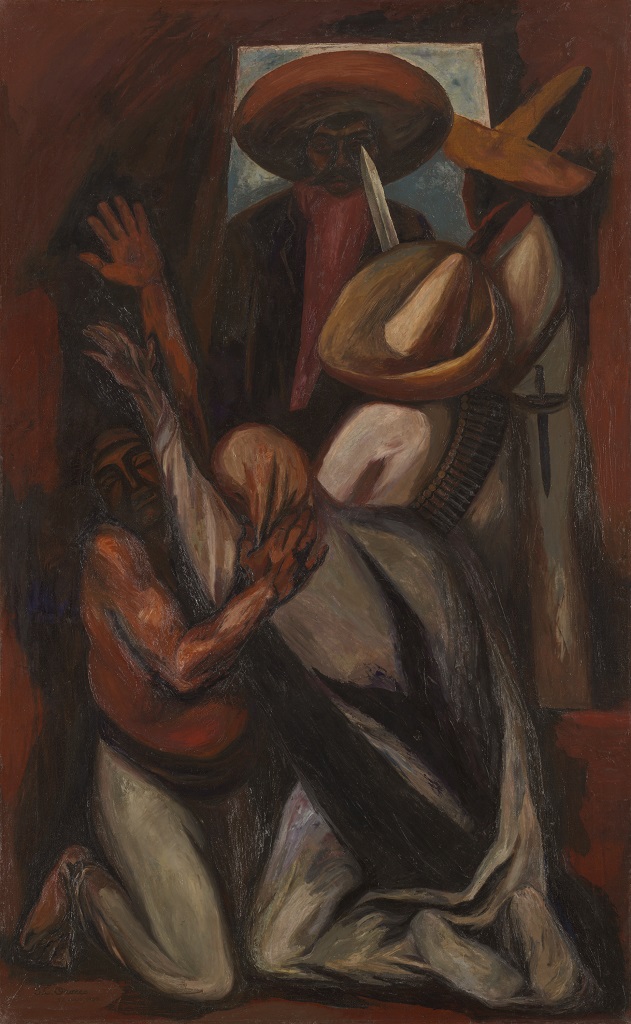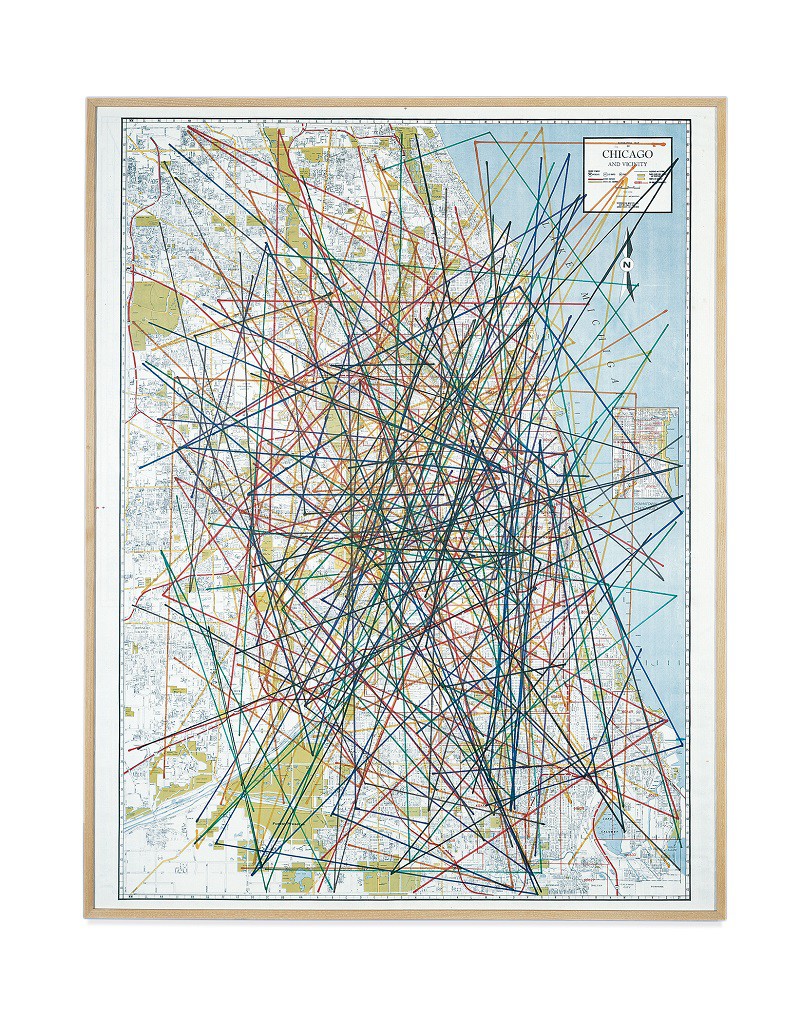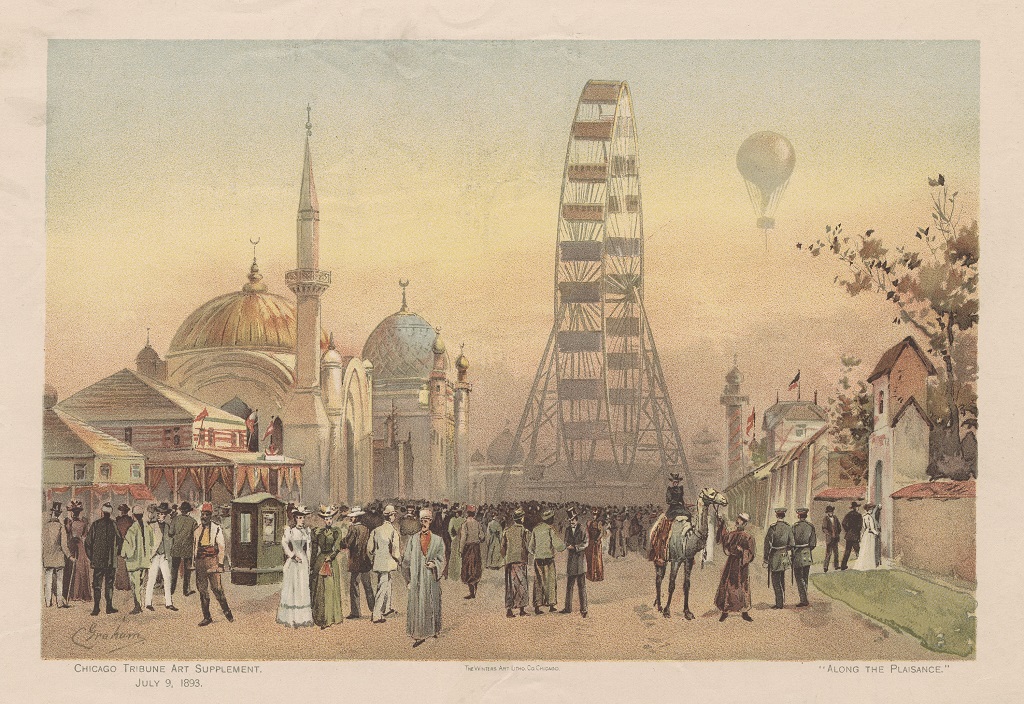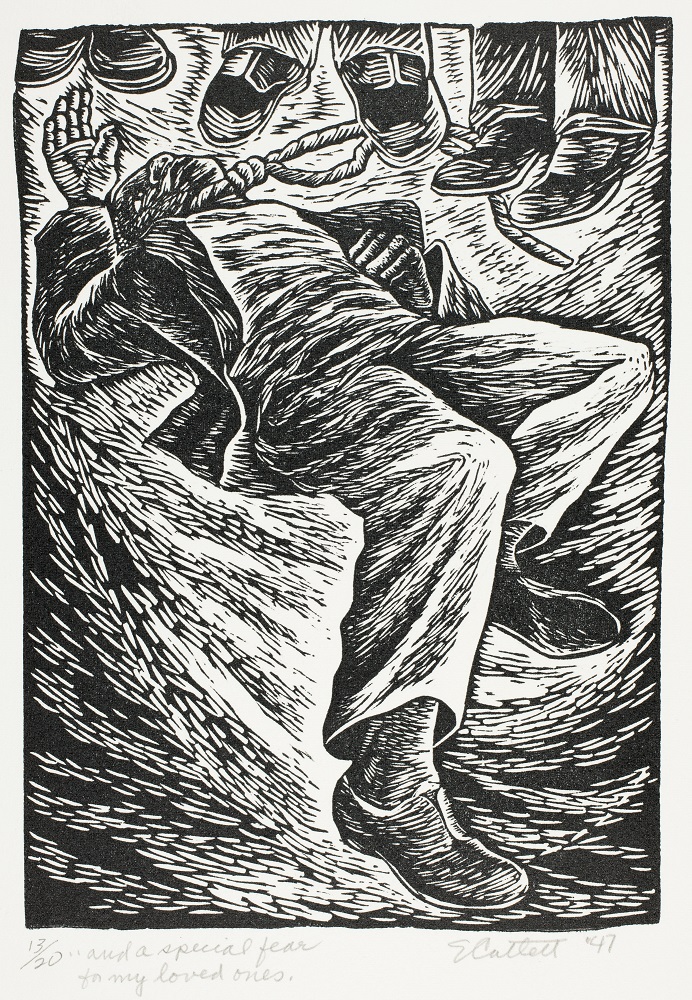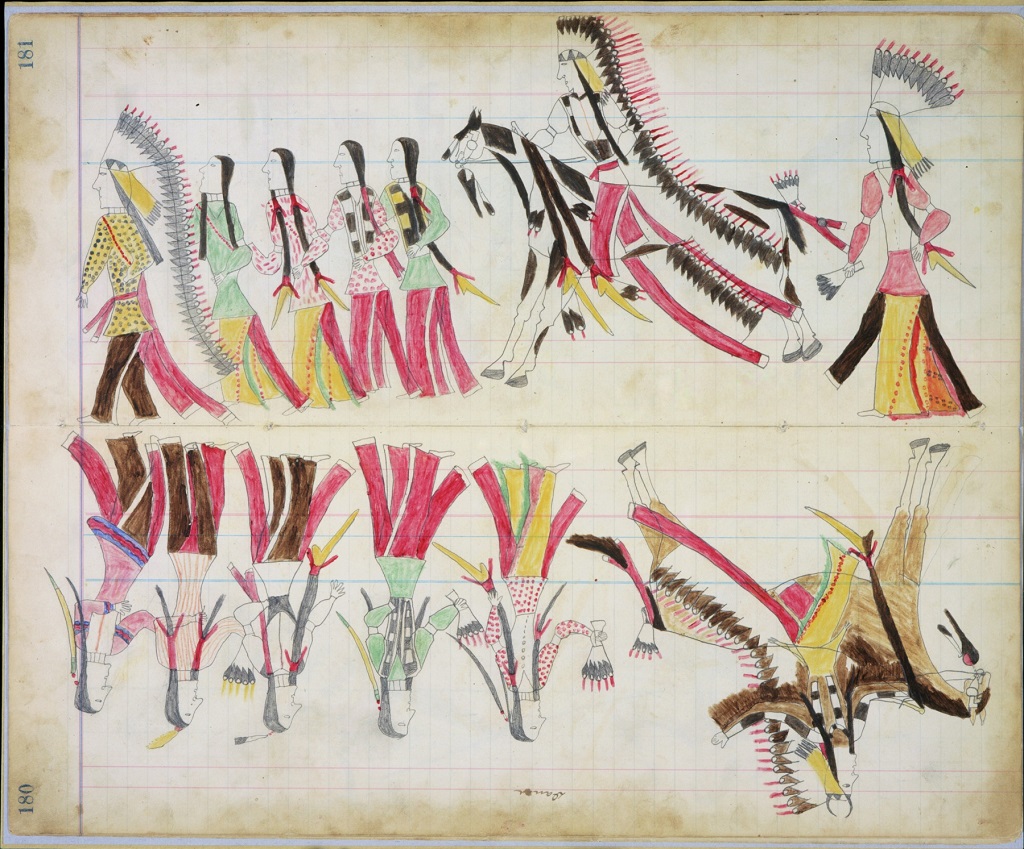Author:
The Art Institute of Chicago Museum Education Department
At First Glance
Pick one of the figures in this painting and describe him or her. How does he/she interact with the others in the scene? Does it seem like some figures are more important than others? Why do you think we see the faces of only some of them? Where are these figures? What do you think is happening in this small space?
Read to Build Knowledge
Framed in the doorway of a hut, Emiliano Zapata’s dark form and wide sombrero (hat) stand out against a bright patch of sky. A deadly weapon looms in front of him. Does it belong to Zapata or to one of the two men just inside the doorway? Both of these men—revolutionary soldiers—are armed and look dangerous. One has a knife secured at his waist and the other wears a bandolier, a belt for holding bullets, over one shoulder. In the foreground two peasants kneel with their arms raised skywards.
Zapata’s arrival commands the attention of both the soldiers and peasants. The menacing look on Zapata’s face indicates that an act of violence is about to occur, but the artist, José Clemente Orozco, makes the specifics of the dramatic scene unclear. Are the peasants fearful of Zapata, or are they praising him as their hero for protecting them against an unseen foe?
Orozco was a leader in the Mexican Muralist art movement of the 1920s, which arose after the Mexican Revolution (1910–1920) and produced murals for government and public buildings across Mexico. The murals portrayed the cultural heritage and political history of the country, including prominent figures and events of the recent Revolution. During the Revolution, civilians served in peasant armies that tried to overthrow the Mexican government. They wanted to return the enormous land holdings of the wealthy landowners to the peasant population. Zapata led one of these peasant armies. Even though he often used violence to achieve his revolutionary goals, Zapata became a national hero to many Mexicans after he was murdered in 1919. The dark red, brown, and black tones in the painting reflect the land for which the Revolution was fought, and in which many innocent people were buried. While some of his fellow artists portrayed Zapata as a positive symbol of the victory of the people over oppression, Orozco was troubled by the amount of bloodshed in the Revolution. Zapata’s ambiguous role as either hero or villain in this painting reflects the artist’s feeling of uncertainty.
Analyze and Interpret
- Based on what you see in this painting, how do you think José Clemente Orozco felt about Emiliano Zapata? How do you know?
- What do you think José Clemente Orozco is trying to communicate about the nature of war and conflict? Which details within the painting help Orozco express this message?
- Emiliano Zapata was a political hero for many Mexicans. If you were to portray a hero of yours, whom would you choose? Why? How would you depict him or her?
For further reading (teachers)
American Art, Teacher Manual (Chicago: The Art Institute of Chicago, 2008).
Barter, Judith A., et al. American Modernism at The Art Institute of Chicago: From World War I to 1955. Chicago: The Art Institute of Chicago and Yale University Press, 2009.
Hutton, John, “‘If I am to die tomorrow’: Roots and Meanings of Orozco’s Zapata Entering a Peasant’s Hut,” Art Institute of Chicago Museum Studies 11, 1 (Fall 1984), pp. 38-51, ill.
McLynn, Frank, Villa and Zapata: A History of the Mexican Revolution. New York: Carroll & Graf Publishers, 2001.
Related video
PBS American Masters: Orozco, Man of Fire. Season no. 21, episode no. 7, first broadcast 19 September 2007 by The Public Broadcasting Station. Directed, written, and produced by Laurie Coyle and Rick Tejada-Flores. http://www.paradigmproductions.org/films/orozco

